On May 28, 2011 when the extended term of the Constituent Assembly was due to expire, almost everyone had given up hopes of averting a constitutional crisis that would have followed. But in typical Nepali way, the political parties, with some help from some of the international players in Kathmandu, managed to broker a 5-point agreement under which the CA was granted a further extension of 3 months during which the political parties would resolve the main contentious issues relating to the implementation of the peace process, finalize a draft constitution and form a government of national consensus with PM Khanal giving way for an agreed candidate to take over.
The following 10 odd days witnessed hectic political activities giving the impression that finally, this time around, they were serious in intent and resolve to move forward in national interest. In fact there was a buzz in Kathmandu that during this period, the main parties were close to signing a 14-point agreement that would have addressed all the key concerns. However, this did not happen and over the last 20 days, things have again cooled down. The political leadership of all parties has gone back to playing the now so familiar role of reiterating their own hard line positions instead of getting engaged in an exercise of negotiating with each other to find common minimum base of agreement. With the first 30 days of the extended term over and only 60 days left to resolve the more contentious issue, one gets the impression that the political process remains where it was two and a half years back!
The reasons behind this state of inaction, as it were, are many, the most important being serious trust deficit between the parties, lack of clear agenda and direction within each party, acute internal dissentions within their own leadership and, of course, all leaders only positioning themselves for the PM’s post rather than worrying about the future of Nepal. They need to get over these and start seriously looking for compromise solutions to the main four issues of (i) implementation of the peace process- mainly the question of integration and rehabilitation of the PLA combatants, (ii) core values of the state to be reflected in the draft constitution (iii) state structure- the question of federalism and (iv) formation of a national government to hold elections.
Observers believe that amongst all these the main problem revolves around the issue of integration and rehabilitation. Once an acceptable answer to this is found, the rest could follow without much problem. The Nepal Army (NA) and the Maoists have to resolve their differing positions on who can be classified as combatants, their numbers, induction criteria and qualifications and equivalence of rank. Besides, they also need to resolve the question whether all of them would be inducted into the NA or dispersed within other existing or new security forces. This is essential since the Nepali Congress and the NCP (UML) stand firm, and justifiably so, that no constitution can be prorogated ‘under the shadow of the gun’. Understandably, their concern is that as long as the Maoists as a political entity retain an armed cadre, there can be no political settlement and no free and fair elections. Conscious of this, there appears to be an attempt on the part of the Maoists to put together some cosmetic plan to give the impression of forward movement based on which, they could plead for another extension of three months in CA’s tenure. This approach on the part of the Maoists is rather strange since everyone knows that the party ‘supremo’, despite dissentions, has majority control over each segment of the party structure including its CA members and the armed cadre. Prachanda does not face any possible threat form within the party and can, therefore, easily deliver on the issue of integration and rehabilitation. That he has chosen not to exercise his authority, gives rise to suspicion over his final intent. His message to the party cadres in January this year to be in readiness to launch another round of ‘revolution’ has certainly not helped instill any degree of confidence amongst the other stake holders. Even the manner in which he had the previous PM Madhav Nepal replaced by Khanal, the deal he struck with him and the way the Maoists tried to capture the critical portfolios in the new ministry, only strengthened the perception that Prachanda had clear designs to capture total control of the state machinery before relenting on other issues in any kind of compromise. In fact, even now there is a view in Kathmandu that the Maoist leader is trying to secure key positions in the army, police and other key institutions for his nominees before Khanal steps down as PM under the 5-point agreement.
As far as constitution writing exercise is concerned, bulk of the preliminary work has been completed and only a few critical issues need resolution. The substantive point relates to whether the constitution should be an inclusive document representing the core values of Nepali nation or should include the politico-socio-economic agenda of any particular party. The ‘democratic parties’ maintain that commitment to the principles of ‘liberal democracy’ should suffice as against the Maoists position in favour ‘people’s democracy’. Other contentious issues of state structure, type of government at the centre, nature of federal structure and devolution of power etc, it is felt, may not really pose serious obstacle even though, the Madhesi parties, given their numbers in the CA, may insist on their aspirations being effectively addressed.
In this scenario, it is imperative that the political parties seriously re-engage themselves in negotiations, rather than sticking to their stated positions, to arrive at the minimum common grounds and move forward. Continued political instability that has bogged the country for many years now, to state the obvious, is not in Nepal’s interest, nor in the interest of the region. While India, without being seen as imposing its wishes on any, may not shy away from playing a constructive role to help all the stake holders in this process, the primary responsibility to bail the country out of the continuing political impasse lies with the people of Nepal and their chosen representatives.
--------------------------------------
Published Date : 1st July, 2011



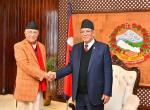
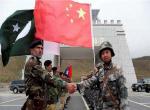

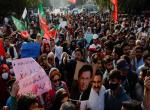
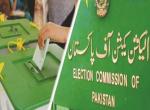
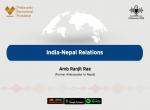
Post new comment